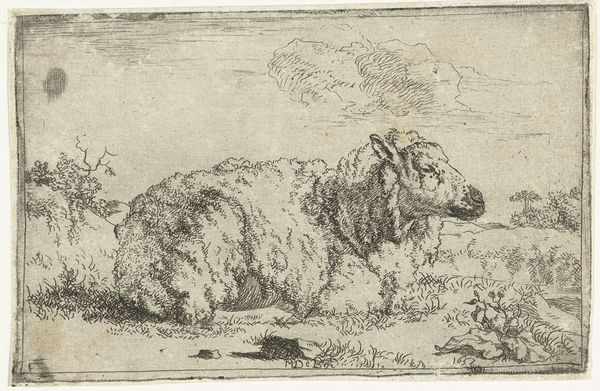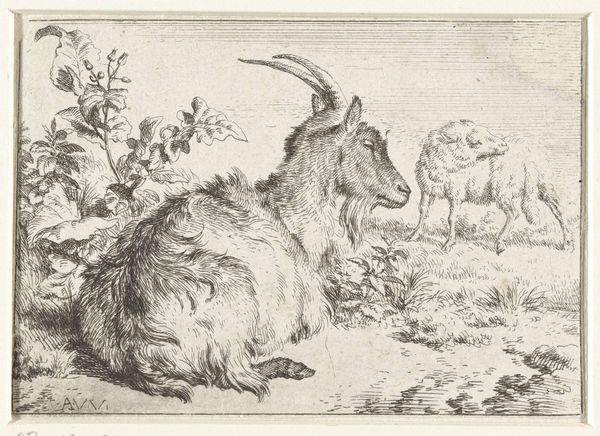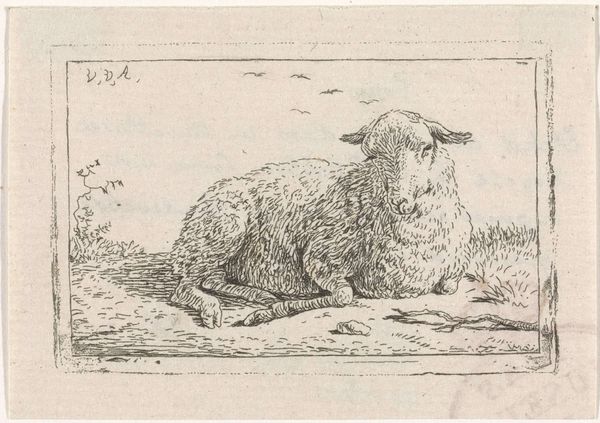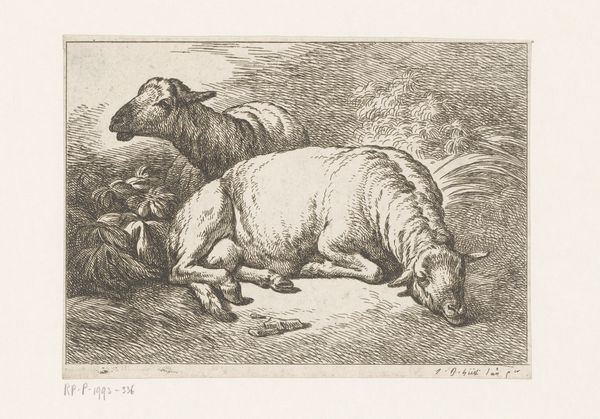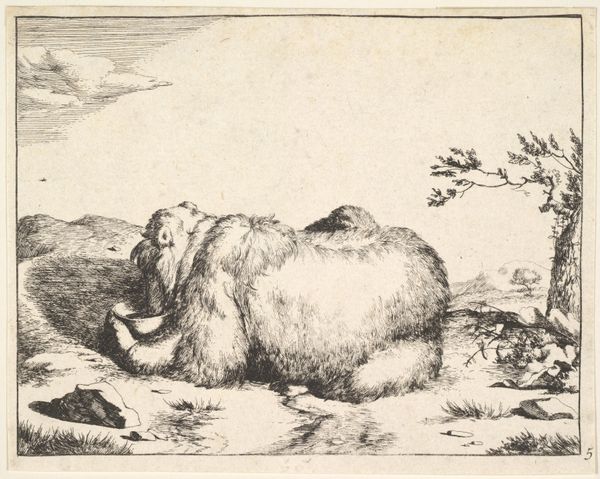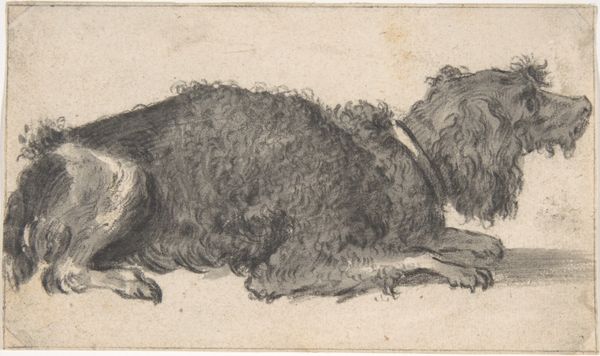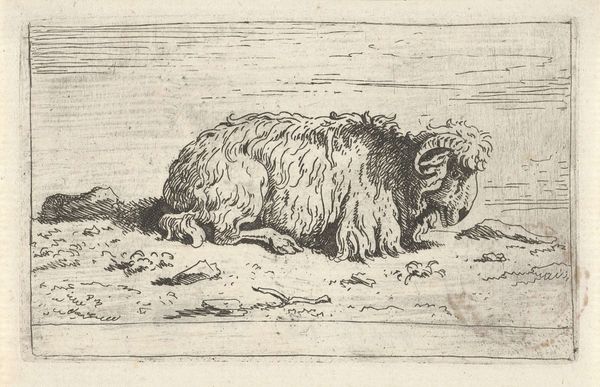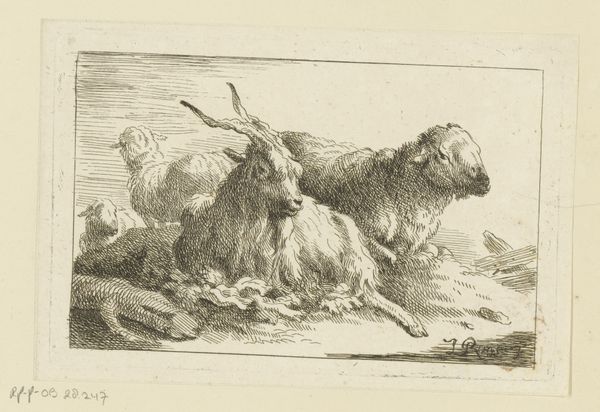
drawing, print, etching
#
drawing
#
baroque
#
animal
# print
#
etching
#
landscape
#
etching
#
genre-painting
#
realism
Dimensions: height 69 mm, width 115 mm
Copyright: Rijks Museum: Open Domain
Marcus de Bye created this etching of a resting sheep in the 17th century. During the Dutch Golden Age, the Netherlands saw rapid economic and social changes, partly due to its prominence in agricultural production and trade. De Bye presents us with more than just a pastoral scene; he offers a vision of tranquility reflective of the Netherlands' burgeoning wealth. However, we must also consider the realities of the labor required to sustain this image, and the historical context of colonialism. The sheep, symbolizing innocence and simplicity, indirectly alludes to the sources of the Netherlands' economic strength. De Bye’s seemingly peaceful depiction invites us to reflect on the complex layers of labor and colonial exploitation beneath its surface. It is an invitation to ponder the relationship between exploitation and idyllic imagery in the creation of cultural identity.
Comments
No comments
Be the first to comment and join the conversation on the ultimate creative platform.
